Trumpet
The trumpets used in Vienna usually have a slightly narrower bore than the models with perinet valves used worldwide, which results in a sound richer in partials (i.e. brighter) (see chapter on the horn). In the course of product diversification, one can now also buy perinet trumpets with a narrower bore and triple valve trumpets with a wider bore.
Basically the "Viennese Trumpet" is a slightly modified "German" trumpet and very similar to the typical "Heckel Trumpets". The most obvious feature of this type of instrument is the use of rotary valves.
The Valves
Figures 1 and 2 show both types in blank and in "pressed" position. The sound wave moves from port A to port B. In the pressed position a piece of tube is inserted, so that the instrument becomes a little longer overall and, depending on which valve was pressed, all "natural tones" are deepened by a semitone (2nd valve), a whole tone (1st valve) or one and a half tones (3rd valve).
As in the case of the horn, trumpeters have a largely uniform opinion on the influence of the valves on the tonal microstructure of a binding: Perinet valves are generally said to have "clearer, more abrupt" bindings, rotary valves a "softer" tonal connection...
So exactly the opposite of what is said about the horn!
In fact, a study of the most important "upward" and "downward" bindings in trumpets indicates that more "soft" bindings are possible with instruments equipped with the rotary valve than with the perinet valve trumpets (see Table 1).
The table shows the different proportions of "soft" and "abrupt" bindings for perinet (piston) and rotary valve (rotary) instruments. The bonds falling under the category "medium" are of medium form and cannot be clearly assigned.

 Fig. 2: Rotary valve
Fig. 2: Rotary valve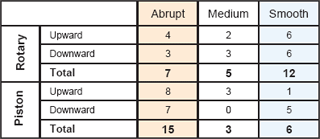
Table 1: "upward" and "downward" bindings
How is it possible, for example, that the rotary valve favors more abrupt bindings in the horn and more soft bindings in the trumpet?
The answer: The valve type has no influence whatsoever on the microstructure of the bonds. The reason for the opposite behaviour lies elsewhere, namely in the interaction between the standing wave and the position of the valve stem - i.e. where the valves are located along the course of bore.
This is easy to understand with the trumpet: if the 3rd natural tone is played, the standing wave consists of 3 pressure bellies and 3 pressure nodes over the entire length of the instrument tube. If the 10th natural tone is played, the standing wave has a total of 10 pressure bellies and 10 pressure nodes over the length of the instrument.
- Pressure belly = at this point the air pressure fluctuates maximum between over- and underpressure.
- Pressure node = normal air pressure prevails here.
As already mentioned with the Viennese horn, independently of the valve type, an "abrupt" sound connection is formed, separated by a short noise tape, when the valve for the played tone is situated at a location where the standing wave at that tone has a pressure belly.
But if the valve would be placed at a pressure node, this would result in a "soft" binding, where the notes seem to flow into each other like a glissando.
Fig. 6 shows that the position of the valve stem on the Viennese (German) trumpet is approx. 23 cm from the mouthpiece beginning. In contrary on the worldwide used perinet valve trumpet the valve stem location measures at least 75 cm from the edge of the mouthpiece.
These different positions of the valve stem just happen to lead to more "soft" bindings on the trumpet with rotary valves. If one were to position the perinet valve at the point where the rotary valve is usually located, then the perinet valve would stand for more "soft" bindings.
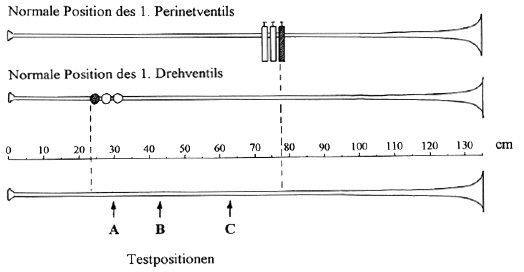
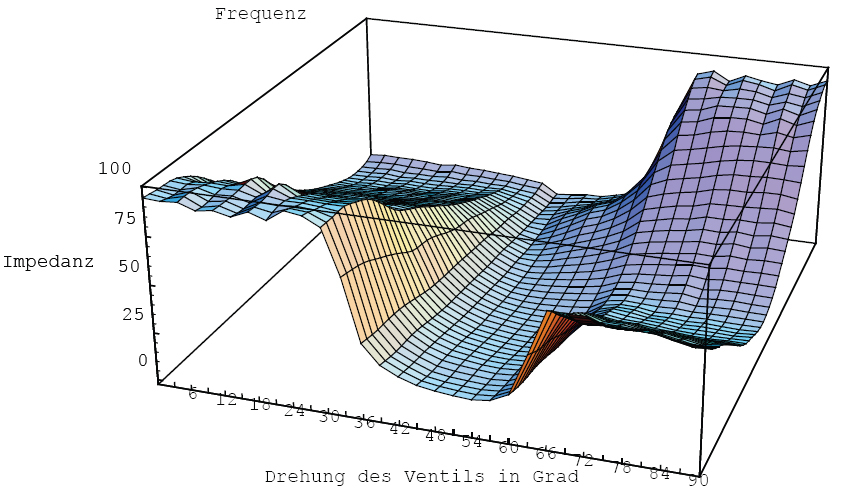
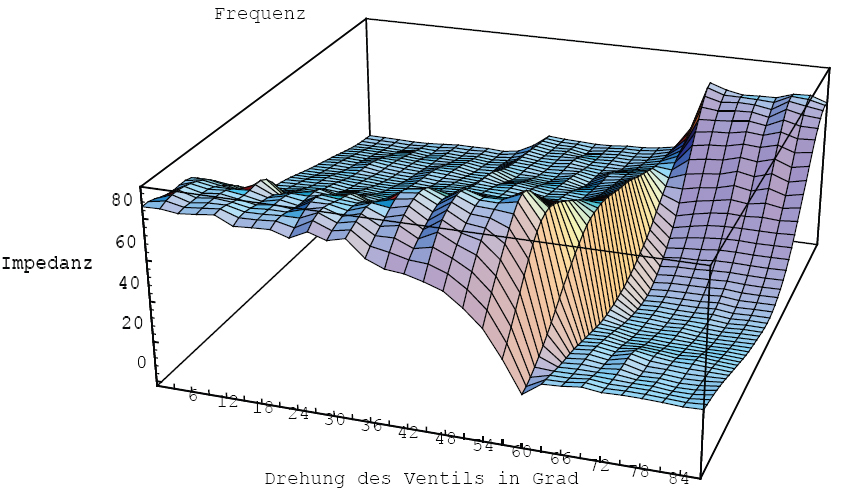 Fig. 4: Same as the previous illustration, only valve positioned in pressure nodes. A wide impedance bridge ensures a continuous transition between the two tones.
Fig. 4: Same as the previous illustration, only valve positioned in pressure nodes. A wide impedance bridge ensures a continuous transition between the two tones.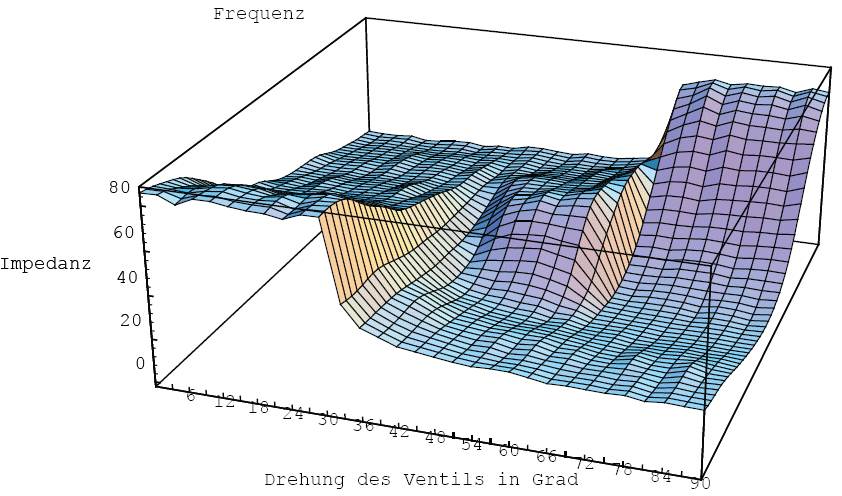 Fig. 5: The same valve stem positioned between pressure belly and pressure node (mixed form).
Fig. 5: The same valve stem positioned between pressure belly and pressure node (mixed form).Fig. 7 shows that if the perinet and rotary valves are at the same position on the instrument tube, the bindings also have exactly the same acoustic characteristics!
The diagrams in Fig. 7 are taken from measurements at test positions A and B.
A = 30 cm from the edge of the mouthpiece
B = 43 cm from the edge of the mouthpiece

The Viennese trumpets therefore differ slightly from the instruments used worldwide in their timbre (slightly richer in partials) and clearly in their bindings.